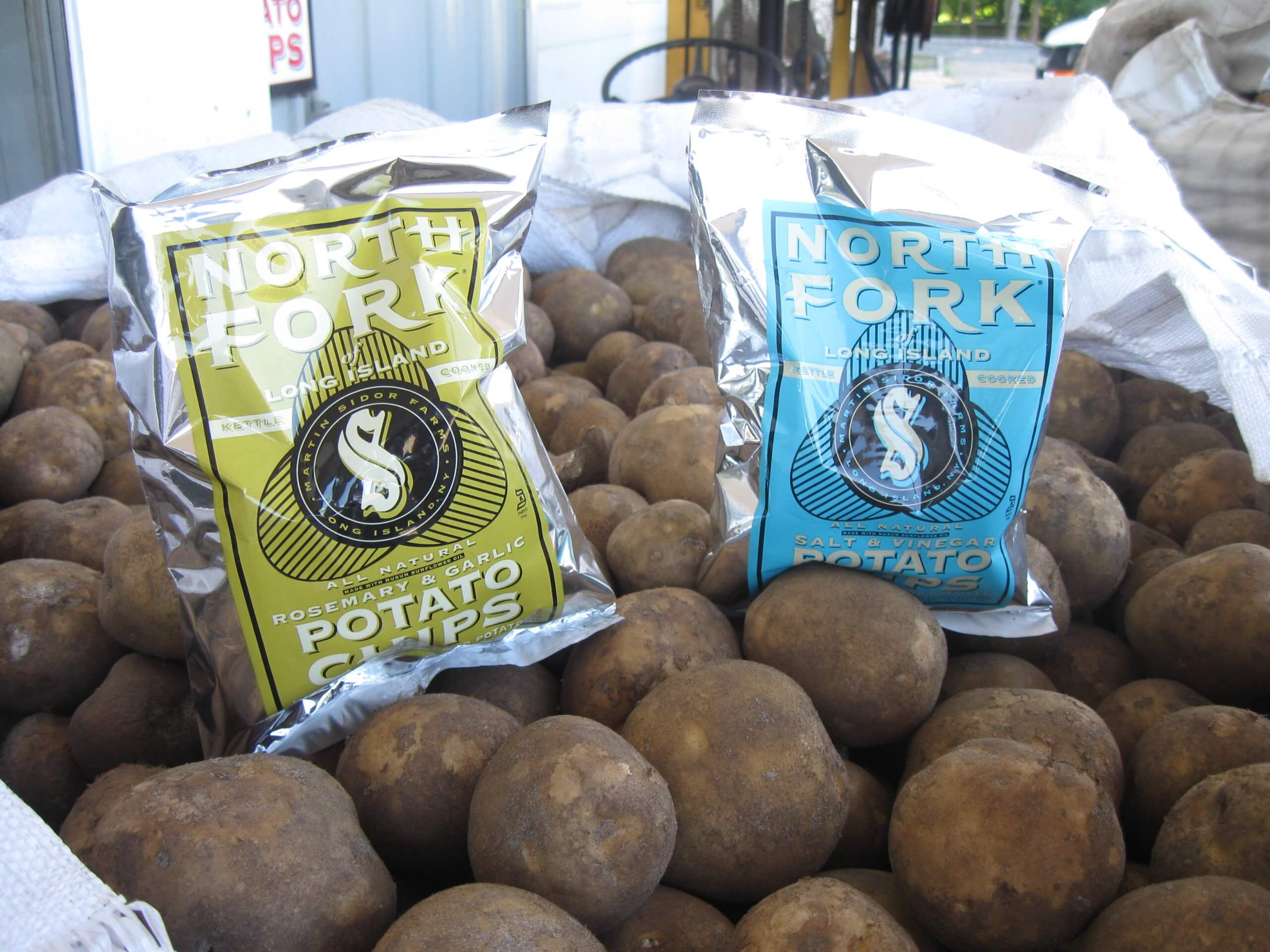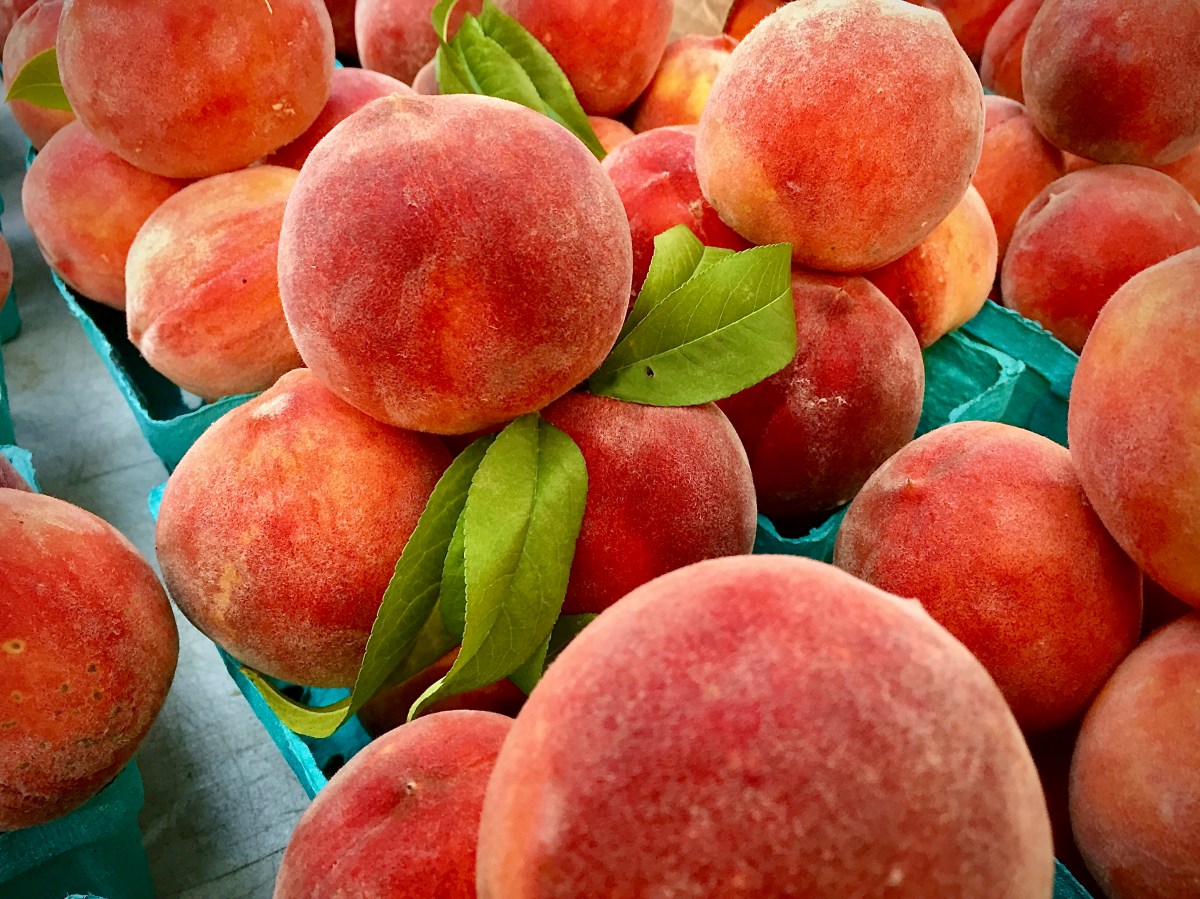North Fork Potato Chips: Local Farmer Adapts in a Changing World

Ukraine is thousands of miles and a world away from Southold, but the war in Ukraine impacted Martin Sidor Farms, one of Long Island’s last potato farmers. When Ukraine was attacked, the farm found it was tougher, if not impossible, to obtain the sunflower oil it uses to make its potato chips.
“Ukraine is the largest supplier of sunflower oil,” said co-owner Martin Sidor, who added they mixed in other oils. “We had to rebrand bags, cotton seed, canola, sunflower to cover ourselves.”
While no business is more local than farming, it’s also a global business these days. And keeping a potato farm running has gotten more difficult. Growing potatoes on Long Island has become particularly challenging, prompting Martin Sidor Farms two decades ago to launch a business making potato chips, a decision they believe has let them continue farming by diversifying during good and bad weather.
“We had a lot of wet days this year. Potatoes aren’t growing that fast,” said Martin Sidor, after he got down from a John Deere he uses to break up the ground, to prepare for rotating crops. “Each year is a different chapter. We start harvesting in early August, as the market demands.”
Sidor said despite the talk of global warming, it’s been “a little cooler than normal” lately, and that an unusually high number of rainy days has hampered planting and cultivating.
While potato farming is a big business nationwide, it has declined on Long Island with its high costs and cooler weather.
There are about 300,000 acres of commercial potatoes in the United States, such as russets, reds, yellows and other varieties, but it shrank from 70,000 to 80,000 to fewer than 1,000 on Long Island.
“We can’t compete with western growers. They produce more potatoes and have more outlets for processing, like French fries and frozen,” Sidor said. “We can’t get the same yields they can.”
Western farmers, in places such as Oregon and Washington state, can reap 45,000 to 50,000 pounds an acre, while 30,000 is considered good on Long Island, he said.
“The living expenses re higher here and the land is cheaper out there,” Sidor added. “There are too many things against that.”
Sidor sells to various brokers as well as Hunts Point, but the real secret has been the decision, about 20 years ago, to diversify and make potato chips.
“With the potatoes, there are only so many buyers on the Island,” Sidor said. “With the chips, there are delis, bodegas and stores.”
Slowly but surely, he said, they gained distributors, although they still make phone calls and target areas they “think could be a good fit” with higher-priced, higher-end product.
“We have to cover our costs,” he added. “Sales of our potato chips the last four or five years are going up each year a small amount.”
Inflation has been a double-edged sword as they faced rising fertilizer, seed, freight, chemical and labor costs, but hiked their prices. “There’s not much you can do about it,” he said. “You don’t overfertilize. A lot of jobs, I do on my own.”
He said he has one full-time helper but ramps up to three to five during peak season.
“You get the extra labor when jobs are warranted,” he added.
The calendar hasn’t been changing in their favor, as far as weather goes. Decades ago, they used to plant potatoes at the end of March, but now typically have to wait until late April, Marin Sidor said. “It seems like the calendar has gone back almost a full month. “I hope as the season goes on, we catch up a little bit. Each year is its own chapter with its own problems.”
Many people have been leaving potato farming behind. “Now we’re down to a handful of farmers on Long Island,” Martin Sidor added.
Carol Sidor, co-owner of Martin Sidor Farms, said their “home farm” is 62 acres in the hamlet of Mattituck, in Southold town, and plant where they produce North Fork Potato Chips. They also rent additional farmland that lets them rotate crops.
“You don’t want to always keep planting potatoes on the same farm year after year,” Carol Sidor noted, adding they rent land from a retired dentist and a lawyer nearby.
Martin Sidor said after growing potatoes, they are often plain a crop like rye or wheat, before rotating back to potatoes.
“If you plant potatoes in a field 10 to 15 years in a row, you get more beetles, bugs and weeds,” Martin Sidor said. “Grains are a simple crop to rotate with. We used to plant cabbage and cauliflower, but that’s labor intensive.
A lot of potato farming land has been turned into housing, as houses go up where crops once grew.
“Levittown was all potatoes. They developed it,” Sidor said. “Once the farmer sold out, they put up homes and shopping centers.”
But Sidor said he is continuing a tradition his grandfather started when he settled here in early 1900s. In the 1960s, when his grandparents passed away, his three uncles and brother farmed. Sidor went off to school and came back to help now and then.
“The way it worked, I stayed on the farm,” he said. “You blink and all of a sudden here you are 50 years later. Everybody thinks there was an ultimate decision you made to do this. It was a gradual time frame. You did this, you did that. And before you know it here you are.”
Families in recent decades retired or quit, but government has provided help in places such as Southold. “In the ’70s, they figured they were losing farmland. They started to purchase development rights,” Martin Sidor said. “They paid you money so you could farm. In return, you wouldn’t develop the land into housing.
He said he hasn’t pressured family to stay in the family business.
“There was never pressure for me,” Sidor said. “There was no pressure for anybody to stay on the farm.”
But there’s always something to do in the farm. They cultivate, spray and irrigate and harvest.
“There’s always machinery to fix,” Sidor added. “We’re producing more potatoes than we need for the chips. We do some wholesale. In the last couple of years, farming hasn’t been so good. Chips have carried us.”
They ran a large sunflower maze, but Martin Sidor said a proliferation of smaller ones made it tougher to do, even if theirs might be bigger and better.
They have looked at starting a farming museum to pay tribute to the region’s farmers, its farming past and present.
“We’re still trying to get the OK and the lot permitted,” Martin Sidor said.
They can get enough sunflower oil these days to rely entirely on that, but in case a shortage strikes again, they’re keeping the label flexible by indicating it could contain other types of oil.
“Now we’re back to normal times again,” Sidor said. “We basically use sunflower oil. But we keep the label the same.”









